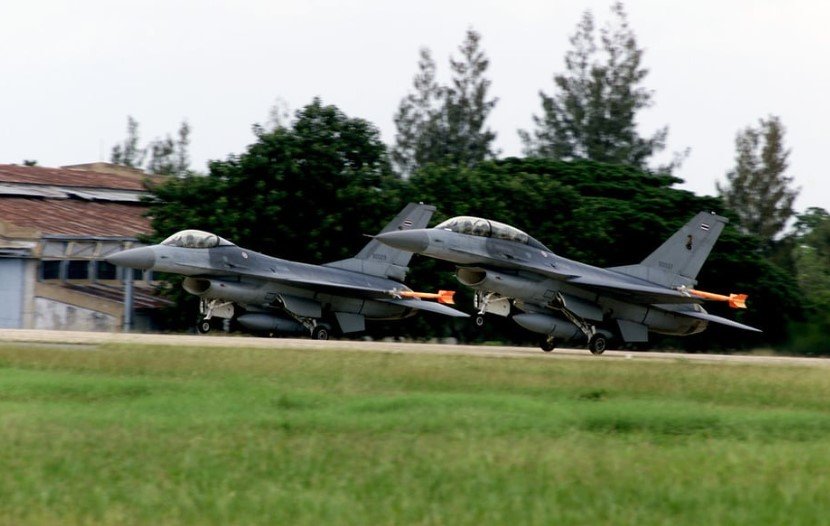Missiles, diplomacy, and a decades-old dispute boil over in sudden daylight violence
A haze of smoke hung over the Thai-Cambodian border Thursday morning as six Royal Thai Air Force F-16s screamed across the sky. One dropped live munitions inside Cambodia. A Cambodian army unit had just launched rockets into Thai territory — and Thailand wasn’t going to let that go unanswered.
By noon, fighting was reported in six different locations. That’s not a skirmish anymore. That’s a battlefield.
A border dispute reignites — and this time, with jets
The simmering tension between Thailand and Cambodia over their shared, often-contested border exploded into open hostilities again — quite literally. The Royal Thai Army confirmed that it had launched airstrikes using F-16 jets after Cambodian forces targeted a Thai military base in Surin and fired rockets toward Sisaket province.
Just hours before the Thai jets lifted off, Cambodian rocket attacks had lit up parts of eastern Thailand. According to locals, the first strike came around 6:30 a.m., startling residents awake with a sudden, terrifying thud.
“We thought it was an earthquake at first,” said one woman who lives near the Surin base. “Then we saw smoke rising from the camp.”
The Thai military didn’t hesitate. Officials quickly greenlit the use of air power, and by late morning, six F-16s were deployed from northeastern airbases. One crossed the border and successfully hit what military officials called a “Cambodian military target.” All six aircraft returned safely, according to Thai officials.

“We planned for this,” Thai army says bluntly
There wasn’t much sugarcoating from Bangkok.
“We have used air power against military targets as planned,” said deputy army spokesperson Col. Richa Suksuwanon at a brief press conference. The statement was short, direct, and seemed to indicate that Thai commanders had anticipated such a scenario — and were ready to act on it.
Thailand says the operation was limited in scope. Only one F-16 was used for live bombing, and no further strikes were planned for the moment. But nothing about the situation feels calm.
Cambodia, on its part, hasn’t issued an official statement on the bombing yet. State-affiliated media in Phnom Penh reported “foreign military aggression” near the Preah Vihear province but stopped short of naming Thailand.
Timeline of Escalation Since Monday
The flare-up didn’t happen in a vacuum. Tensions have been mounting for days. Here’s what’s known so far:
| Date | Event |
|---|---|
| July 21 | Thai troops accuse Cambodian patrol of crossing into disputed zone |
| July 22 | Cambodia lodges diplomatic protest, accuses Thailand of provocation |
| July 23 | Border shut on both sides, diplomats expelled |
| July 24 | Cambodian rockets hit Thai bases; F-16s deployed in retaliation |
The Preah Vihear region, where the clash is concentrated, has been a sore spot for both countries for decades. The 11th-century Hindu temple perched on a cliff has changed hands more than once, and international court rulings have only partially settled the dispute.
A deeply personal memory for many Thais
In rural Thai provinces like Surin and Sisaket, the conflict hits close to home — literally. Many here still remember the 2008–2011 clashes, when soldiers traded mortar fire and thousands of civilians had to flee.
“It’s like we’re back in those years,” said an elderly man in a border village. “Except this time it’s jets, not just rifles.”
The use of F-16s marks a significant shift. Thailand has used them before, but rarely in direct combat against neighboring states. The move sends a clear message: This isn’t just about posturing anymore.
Not just military, but political stakes too
The timing couldn’t be worse for either country. Thailand’s civilian government is facing pressure to appear firm after a string of domestic economic challenges. Meanwhile, Cambodia’s new Prime Minister Hun Manet — who took over from his father Hun Sen — is still navigating leadership amid high public expectations.
There’s speculation among Thai political analysts that this show of force could be intended for domestic audiences just as much as Cambodian troops. A visible and swift retaliation helps the Thai leadership appear decisive.
Some believe the Cambodians knew exactly what they were doing too.
-
“This was probably a calculated probe to test Thailand’s readiness and political will,” said Chanvit Phromsorn, a Thai security analyst.
-
“What they got instead was a direct hit from an F-16.”
What’s next? All eyes on ASEAN and the UN
Neither country wants an all-out war. At least, that’s what diplomats have repeatedly said. But with borders now closed, ambassadors expelled, and artillery on standby, the diplomatic lane is narrowing quickly.
So far, ASEAN hasn’t convened an emergency meeting, though Indonesia and Singapore have reportedly urged restraint behind the scenes. The UN has not commented publicly, but observers say the Security Council could step in if the conflict spills beyond the border zone.
There’s cautious hope that cooler heads might prevail — but nobody’s banking on it just yet.
A tense calm after the storm
As of Thursday night, no new airstrikes were reported. Troops on both sides appeared to settle into defensive positions. There were no confirmed casualty numbers released by either side.
Still, fear lingers.
“We don’t know if they’ll strike again tomorrow,” whispered a woman selling bottled water near a shuttered highway checkpoint. “We just want it to stop.”
And that says more than any press conference ever could.
